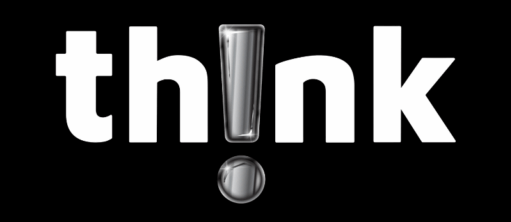
First came the daily AI habits—little productivity hacks that saved a few minutes here and there. Then you tried a handful of next‑step plays that proved AI could move real projects forward.
Now the question is louder than ever: How do we make AI part of the way we work, not just another tool we sometimes use? The answer isn’t in another software purchase. It’s in culture—shared mind‑sets, rituals, and guardrails that position AI as augmented intelligence: a digital co‑pilot that amplifies human judgment and creativity.
This AI Culture Playbook lays out six practical moves any SMB can run in the next 90 days. No data lake required. No 200‑page policy manual. Just a clear vision, a small volunteer crew, and a safe sandbox where everyone can experiment without risking client data—or the budget.
“Your first governance win? A paid corporate AI account—not another steering committee.”
1 Why AI Culture ≠ Tech Culture
Technology alone rarely drives transformation. Culture does. It’s the invisible operating system that dictates whether employees feel free to tinker—or terrified they’ll break something.
A recent Forbes Tech Council survey found that companies with high psychological safety and a shared learning mindset adopted new AI workflows 30 % faster than tool‑centric peers.¹ That speed compounds: early adopters iterate, improve, and pull further ahead while laggards debate which platform to buy next.
Quick Check: Can every employee answer the question, “How will AI make my job easier this year?” If not, start here.
2 Reframe AI as Augmented Intelligence
The real upside isn’t replacement—it’s amplification. Position AI as a trusted co‑pilot that does the heavy lifting while humans steer strategy, relationships, and ethical calls.
- Construction Example: A superintendent voice‑queries an on‑site assistant for spec clarifications, cutting RFI cycles by half and pulling days off the schedule.
- Country‑Club Example: A clubhouse manager adjusts staffing rosters based on AI‑predicted member traffic patterns, saving thousands in overtime costs while maintaining VIP‑level service.
When teams see AI this way, fear fades and curiosity spikes. People stop asking, “Will I be automated?” and start asking, “What could I do if a co‑pilot handled the busywork?”
“AI isn’t here to replace talent—it’s here to amplify it.”
3 Craft a One‑Sentence Vision Statement
People rally behind a clear north‑star. Keep it human, concrete, and time‑bound.
Template: “By YEAR, every teammate has a digital co‑worker that OUTCOME so we can BUSINESS VALUE.”
Filled‑In Examples
- Construction: “By 2026 every project manager has a digital co‑worker that drafts submittal packages in minutes so we can deliver jobs faster and boost profit margins.”
- Country Club: “By next season every department head has a digital co‑worker that predicts member needs so we can personalize experiences and increase retention.”
Paste this statement into onboarding decks, quarterly business reviews, and the footer of your intranet. Repetition turns aspiration into expectation.
4 Form an AI Culture Crew (Lightweight)
Skip the 20‑person task force. Recruit 5–7 cross‑functional volunteers—Ops, HR, Risk, Tech, and at least one frontline employee. Give them a 90‑day charter:
- Pilot Training Bursts – 15‑minute lunch‑and‑learns that demo real prompts and invite audience participation.
- Surface Quick Wins – Capture success stories (“Saved 3 hrs automating invoice follow‑ups”) in a shared doc and broadcast weekly.
- Flag Risks Early – Privacy, cost spikes, bias—then propose simple mitigations.
Rotate membership each quarter to keep energy high and avoid burnout. Budget? A shared Teams channel, calendar invites, and maybe pizza.
Why It Works
According to McKinsey’s 2024 Super‑Agency study, organizations that empower small, autonomous teams around AI initiatives realize productivity and creativity gains 2× faster than those relying on top‑down mandates.² Humans love ownership; the Culture Crew gives them exactly that.
5 Launch a Safe Sandbox—The Simple Way
The fastest path to governed experimentation is a paid corporate account with ChatGPT Team, Claude Team, or Microsoft 365 Copilot.
What You Get Out‑of‑the‑Box
| Benefit | Why It Matters |
|---|---|
| Data Isolation | Prompts and outputs stay inside your tenant—critical for client confidentiality. |
| Enterprise Encryption & Audit Logs | Checks the compliance box for most SMB auditors. |
| Cost Controls | Set spend alerts—no more surprise API bills. |
Three Guardrails
- No PII or client secrets in prompts.
- Spend ceiling alerts at 75 % of budget.
- Bias‑check list for anything public‑facing.
Spin up a dedicated Slack or Teams channel—#ai‑sandbox—for sharing prompts, lessons learned, and 90‑second demo videos. Curiosity spreads at the speed of emoji reactions.
6 Measure Culture, Not Just Output
Traditional ROI metrics—hours saved, dollars earned—matter. But measure culture first: adoption, confidence, frequency of use. What gets measured gets mind‑shared.
| KPI | What It Measures | How to Track |
| AI‑Literacy Pulse | % of staff self‑rating “confident” with prompts | One‑minute monthly survey (Forms or Google) |
| Workflow Adoption Rate | % of core processes with human + AI assist | Log wins in a shared sheet; review in QBR decks |
Tie these metrics to team OKRs. Celebrate progress in town halls. Recognition beats regulation every day of the week.
“Measure curiosity before you measure cost savings.”
Embedding AI into company DNA isn’t a tech rollout—it’s a mindset revolution. Start with a compelling vision, empower a small crew, create a safe sandbox, and track the cultural pulse. Follow these six moves and, by fall, your team will see AI as an indispensable co‑pilot—ready to drive the next decade of growth.
Ready to kick‑start your AI culture?
Book a complimentary 30‑minute AI Culture Kickstart Call with a Think strategist to map your first three moves. Schedule Now →
Footnotes / Sources
- Forbes Tech Council, “Shifting Culture To Embrace An AI Mindset” Feb 2024.
- McKinsey & Company, The Super‑Agency Effect: Human + Machine Teams, Nov 2024.
